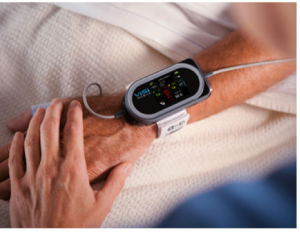Guest posting by Emile Gleeson
All of our readings about e-patients and patient engagement over the last month or so as well as the team presentations last Thursday have caused to me reflect a lot on my own recent experience as a surgical patient at Baylor/St. Luke’s Hospital. Just a few months ago, in December 2014, I received surgery to shorten my left anterior talofibular ligament (ATFL) and remove some excess scar tissue in the surrounding area. This surgery was necessary because, as a dancer, I snapped my ATFL in high school and didn’t stop dancing long enough to let it heal properly. As a result, my ligament inappropriately lengthened itself during the healing process and a large amount of scar tissue formed in the area. Eventually the pain had gotten so bad that I couldn’t walk without being in extreme pain (I was in a walking boot for three months pre-surgery, and even then I still had a lot of pain). As a pre-medical student, I was probably a prime example of an engaged patient, as I was always very aware of what exactly my medical issue was and what my best chances were of fixing it, and I had a great overall experience with my surgery. However, I think that my surgeon’s availability and willingness to answer questions both pre- and post-surgery was what really gave me this great experience.
When I first met with my surgeon, a few months before my actual surgery, he was able to email me a full report describing my condition and the exact surgical plan that he wanted to use to fix it. While many patients may have simply glossed over this email, or figured that they wouldn’t be able to understand the medical terminology, I took the time to really understand the entire procedure, looking up unfamiliar terms when necessary. As a result, I was extremely prepared for exactly what my post-surgical recovery would be like, and I was able to plan accordingly (For example, I scheduled my surgery right before winter break started so that I wouldn’t need to push myself to begin walking sooner than recommended in order to go to classes). Additionally, I thoroughly read through all of the post-surgery paperwork that I was provided with, and followed all instructions carefully, since, as a pre-medical student, I knew the importance of a good post-surgical recovery. This engagement of mine certainly played a big role in my successful (at least so far…) recovery, however, I still believe that my surgeon’s availability and willingness to explain everything on a level that I would understand is really what made the biggest difference in my experience. During both my pre- and post-surgery times, my surgeon made himself available for questions through email, which allowed me to clarify anything that I didn’t quite understand, and allowed me to work together with him to choose the best date for my surgery. Despite the prevalence of the “pre-surgical blackhole” which was mentioned in one of the other teams’ presentations on Thursday, I didn’t feel as though I was ever disconnected from my surgeon during this time. Perhaps if more doctors made themselves available to their patients in this way, more people would have positive surgical experiences such as mine.

